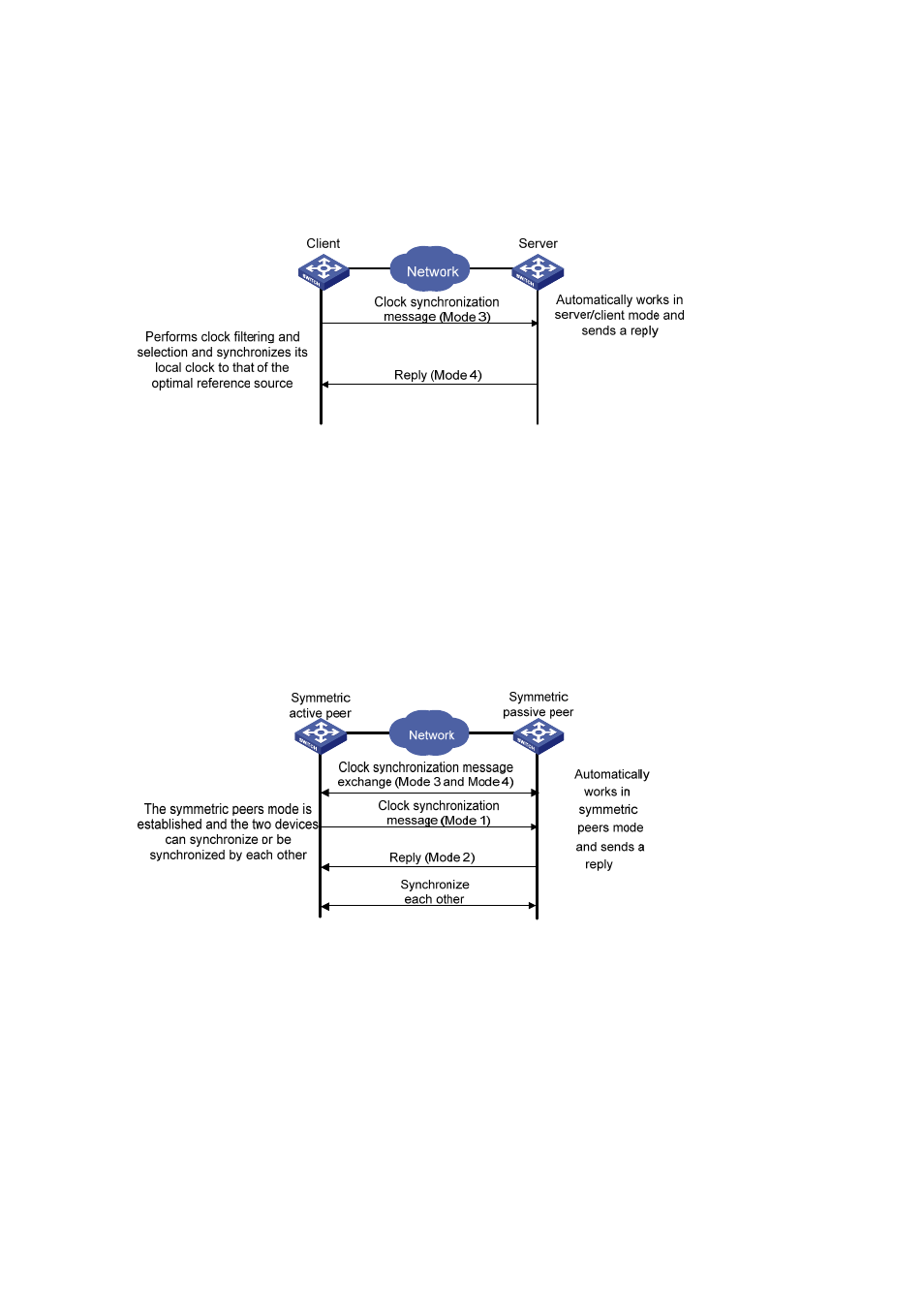Operation modes of ntp, Server/client mode, Symmetric peers mode – H3C Technologies H3C WX6000 Series Access Controllers User Manual
Page 490

54-5
Operation Modes of NTP
Switches running NTP can implement clock synchronization in one of the following modes:
Server/client mode
Figure 54-3
Server/client mode
When working in the server/client mode, a client sends a clock synchronization message to servers,
with the Mode field in the message set to 3 (client mode). Upon receiving the message, the servers
automatically work in the server mode and send a reply, with the Mode field in the messages set to 4
(server mode). Upon receiving the replies from the servers, the client performs clock filtering and
selection, and synchronizes its local clock to that of the optimal reference source.
In this mode, a client can be synchronized to a server, but not vice versa.
Symmetric peers mode
Figure 54-4
Symmetric peers mode
A switch working in the symmetric active mode periodically sends clock synchronization messages, with
the Mode field in the message set to 1 (symmetric active); the switch that receives this message
automatically enters the symmetric passive mode and sends a reply, with the Mode field in the message
set to 2 (symmetric passive). By exchanging messages, the symmetric peers mode is established
between the two switches. Then, the two switches can synchronize, or be synchronized by, each other.
If the clocks of both switches have been already synchronized, the switch whose local clock has a lower
stratum level will synchronize the clock of the other switch.